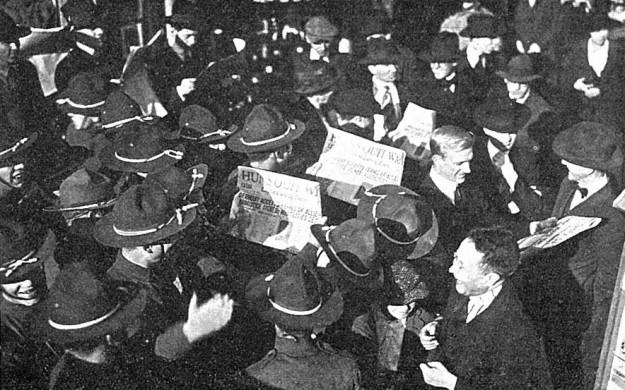

Lt. John E. Osmun 1916 was a lucky one: He lived to tell his tale. He was flying a bombing plane in France with his squadron during World War I when a huge, dense cloud enveloped him. He lost sight of his own wing tips, became caught in a spin, and soon started to hurtle rapidly towards the ground. "Well, this is rather too bad, but it's the end for yours truly," he thought, as related in a letter to his father, excerpts of which were published in the Nov. 20, 1918, issue of PAW. "I wonder how soon the ground will come up and kill us."
Frantically pulling at his controls, Osmun managed to come out of the spin. None of the other planes he had originally flown with was in sight, so he headed back to base. It was then that he learned that the formation had encountered enemy planes, Osmun wrote. Fierce fighting had ensued, and only one other plane returned. The spin — which he had thought would be the end of him — had actually saved him. "Do you wonder that I believe that it was the hand of Fortune that put me into that spin and took me out of it again?" he wrote. Others, however, were less fortunate. A total of 117 Princeton students and three faculty perished in the war, and their legacies are now memorialized in bronze stars on their former dormitories and a tablet in the memorial atrium at Nassau Hall. As we approach Veterans Day and the anniversary of the World War I armistice in 1918, we looked back at PAW's coverage of Princeton's role in the war and the campus celebration of the conflict's end.
The war brought large changes to University life, not least the makeup of the student body. By December 1917, at least 3,000 Princeton men were in the service, and there was a 63 percent drop in admissions, according to the Mudd Manuscript Library's website. Racked by a deficit, Princeton had to open its campus to the military, and by 1918 Princeton had become, in essence, a military college. Experiences at war also changed how many regarded academics. Some called for a move to make college education more practical and immediate in its appeal. Others contended that the war had shown that academic life was not useless and futile, for colleges had proved useful in a time of crisis. There was the question, too, posed in an article in the Nov. 20, 1918, issue of PAW, of whether those returning from military service would "be satisfied with the old laissez-faire or demand that the four years of college beget men of stiffer training and sterner stuff than was often the case in the old days."
